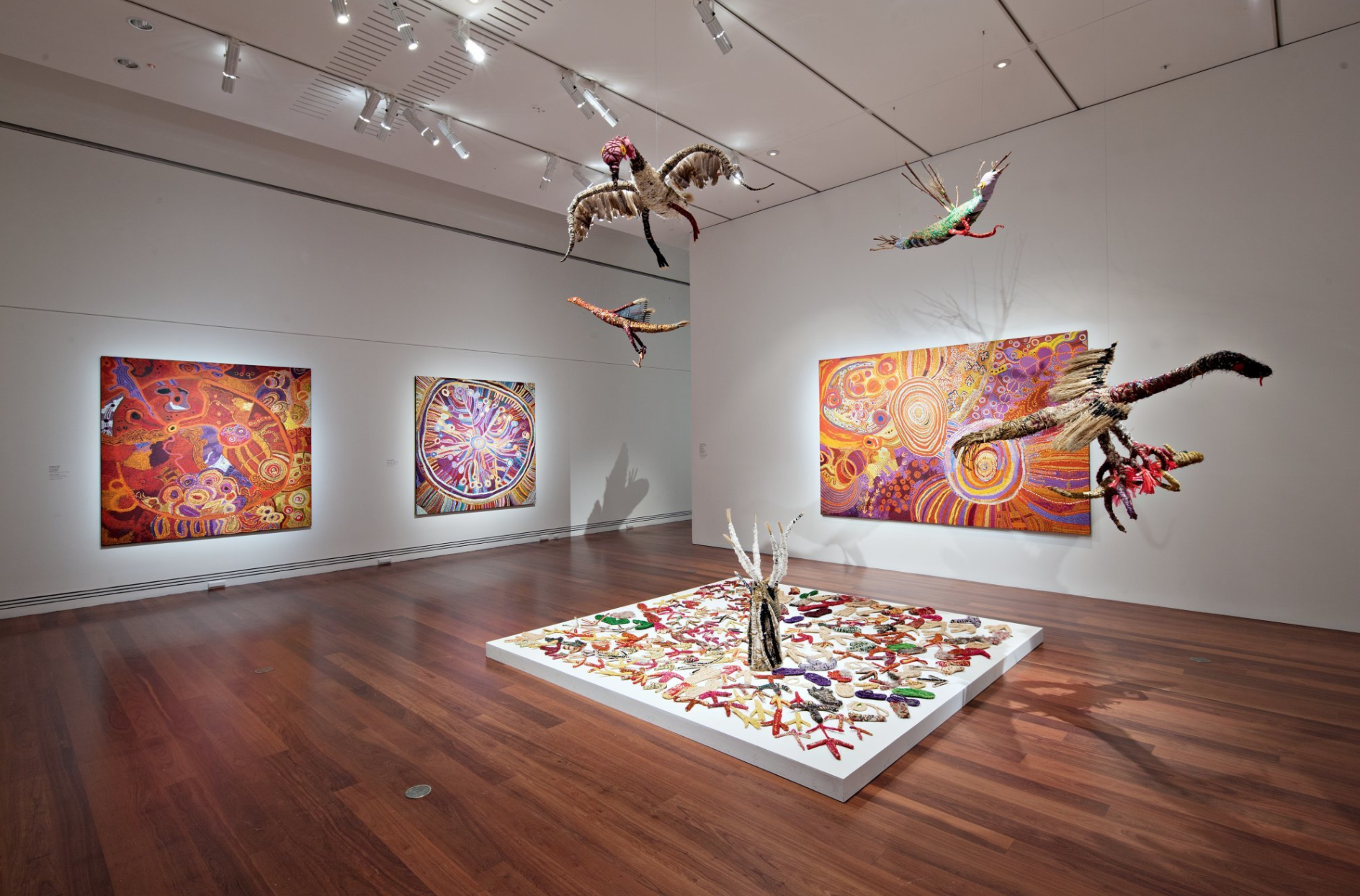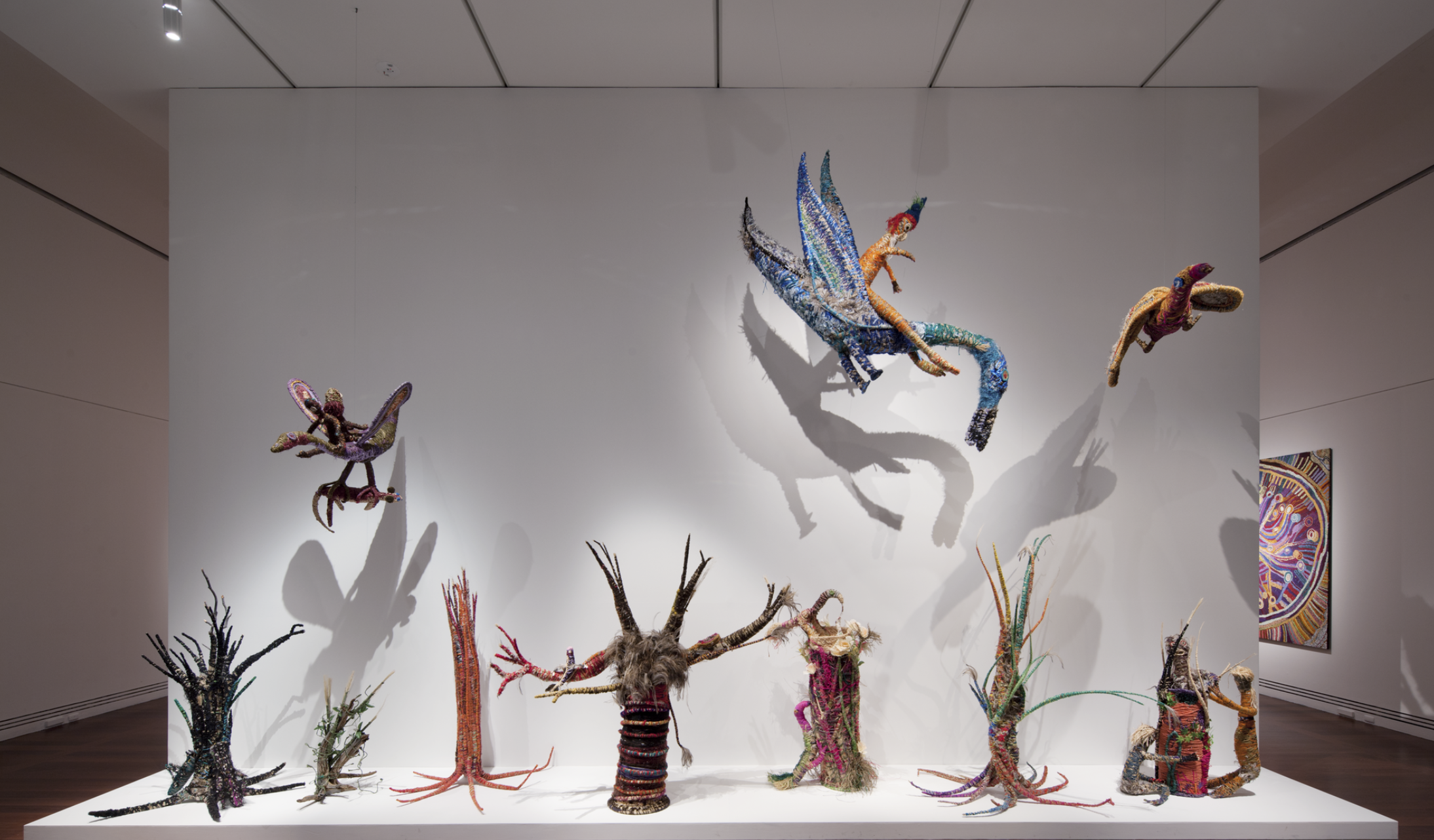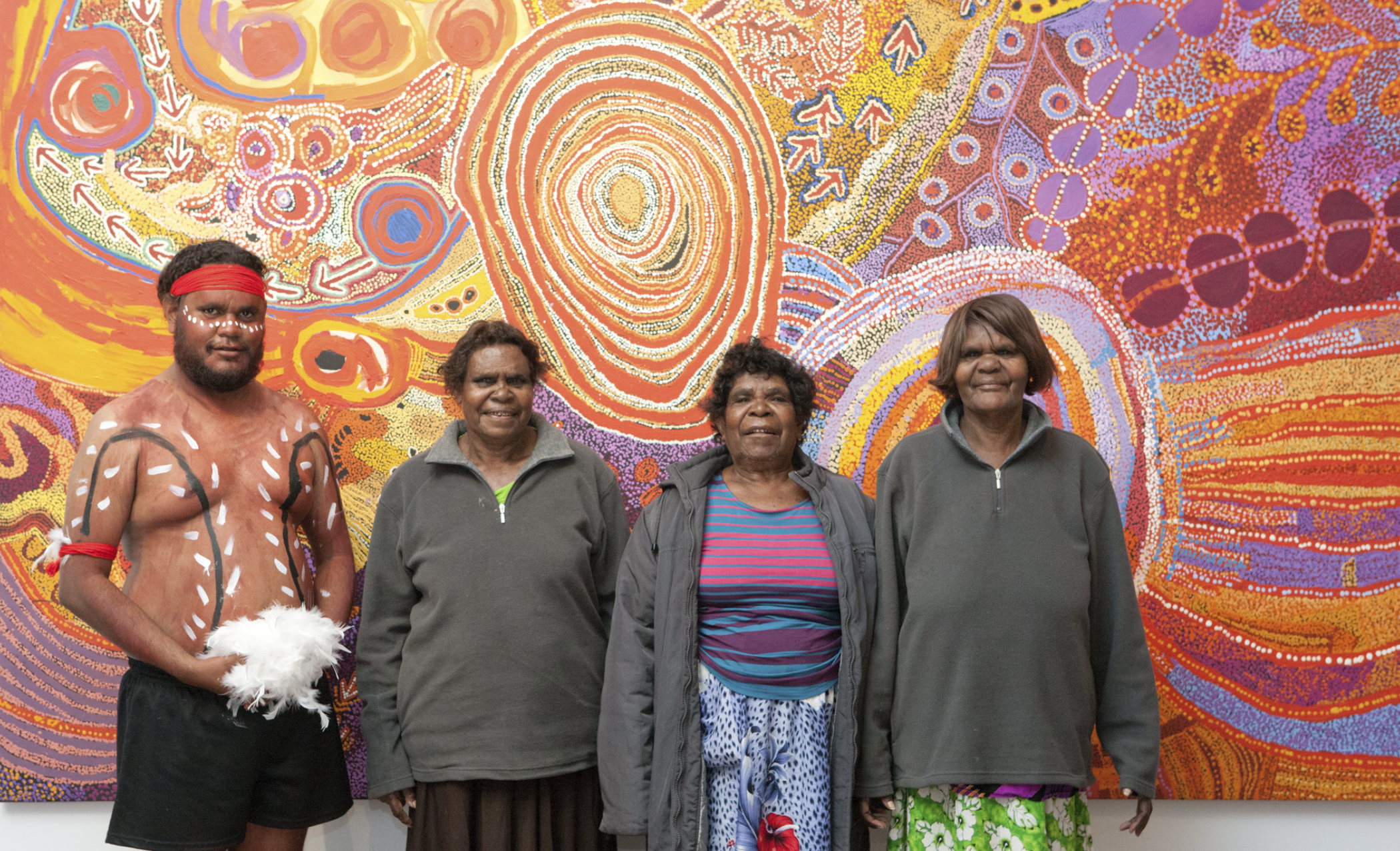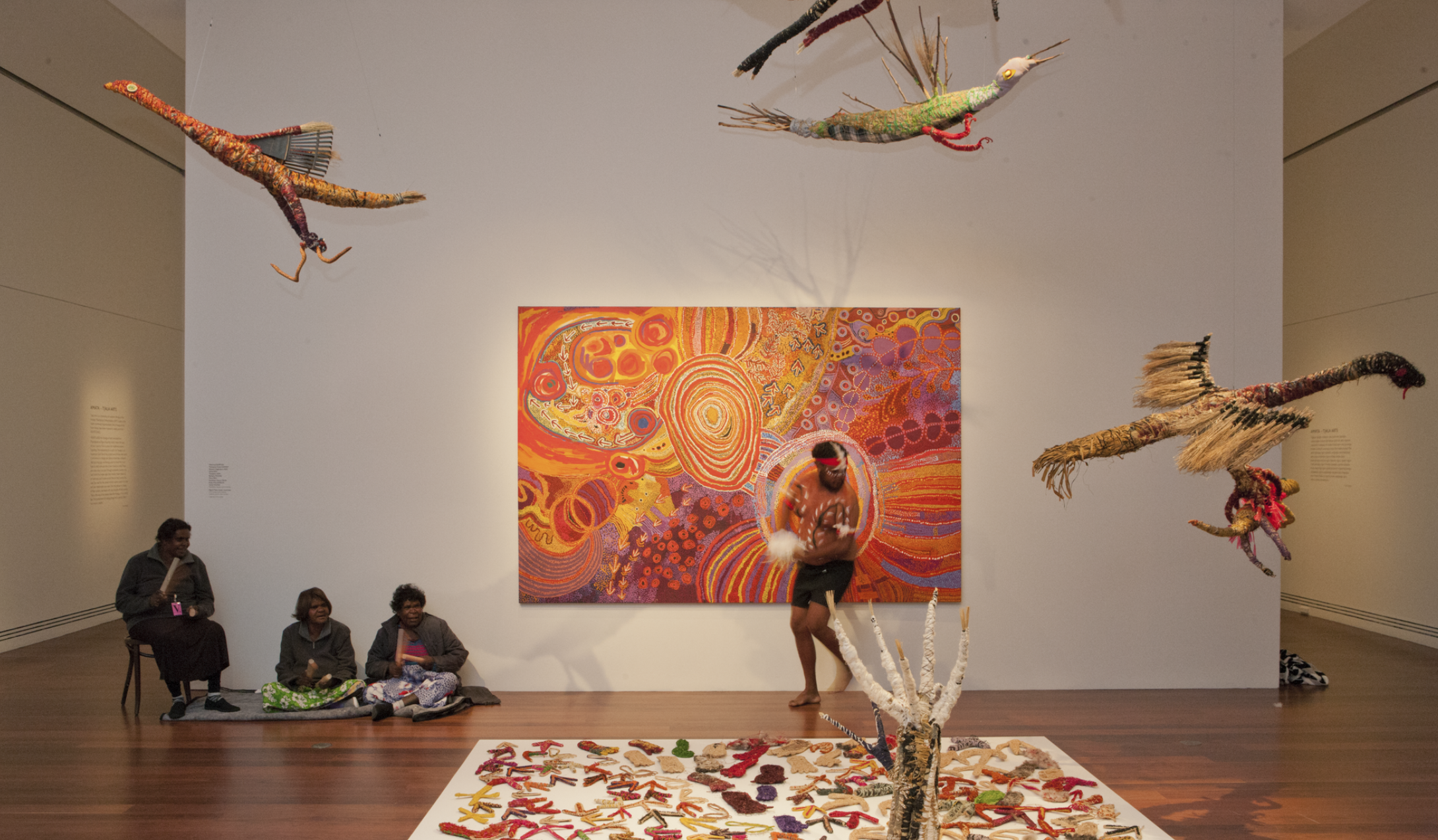HEARTLAND AGSA
HEARTLAND: CONTEMPORARY ART FROM SOUTH AUSTRALIA
Art Gallery of South Australia, Adelaide 2013
Curated by Nici Cumpston, Curator of Aboriginal and Torres Strait Islander Art and Project Curator, Lisa Slade, HEARTLAND was an exhibition of contemporary art from South Australia that sought to generate new ways of thinking about who and where we are.
Including Tjala artists from Amata, Kate Breakey, Kim Buck, James Darling and Lesley Forwood, Wendy Fairclough, Stewart MacFarlane, Ian North, Annalise Rees, Chris De Rosa, Yhonnie Scarce, Paul Sloan, Tjanpi Desert Weavers, Angela Valamanesh, Hossein Valamanesh and Amy Joy Watson.
HEARTLAND presents the distinct visions of contemporary artists working in, and in response to, the state of South Australia. The title began as a pre-verbal gesture – one involving the hand and the heart – in an attempt to articulate the corporeal and spiritual connection we have with place. Wanting to exceed the limitations of landscape, with its grounding in European colonial vision, we sought a descriptor that suggested many things to many people. HEARTLAND – connecting the heart and the land but also containing the words ‘hear’ and ‘art’ – offered the lexicon that shaped our curatorial journey, urging us to seek out and listen to artists making work with emotion, spirit, resilience and originality.
Art from the ancestral heart of this country, from the world’s oldest living culture occupies the centre of the exhibition and features works by artists from Amata in the Anangu Pitjantjatjara Yankunytjatjara (APY) Lands in the state’s northwest. Senior cultural law man Hector Burton’s paintings were the wellspring for the exhibition concept (his work is prized in the Art Gallery of South Australia collection), and more Anangu artists became involved following a visit to the Amata community in 2012.
Painting for HEARTLAND began during our visit, with Wawiriya Burton commencing her triumphal Ngayuku Ngura – My Country. The exhibition title is now part of Anangu parlance and is referred to in the Tjala art centre as Ngura Kurunitja (‘heart and soul of the country’ in Pitjantjatjara). The aspirations and enthusiasm of the Tjala artists extended our curatorial ambition, reinforced by our experience of sitting down with the artists, watching them work and having the privilege of being taken out on country.
The multi-dimensional installation created for HEARTLAND includes figurative sculptures made from tjanpi (spinifex) and found materials, large vibrantly coloured canvasses, often painted from within (with the artists sitting in the middle of the painting and working outwards) and a local language sound component. The flock of large birds titled Paarpakani (Take flight) were made in 2011 by members of the Tjanpi Desert Weavers, living in Amata and Ernabella. The accompanying Tjanpi punu (trees) were created in 2012 by nine senior Amata women artists. For Anangu artists, their works of art are the land and the people, and hence it is not surprising that the art takes myriad forms. Art in the Anangu Pitjantjatjara Yankunytjatjara heartland is at once the most ancient and the most contemporary art of our time.
Nici Cumpston and Lisa Slade, Art Gallery of South Australia




